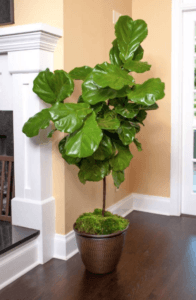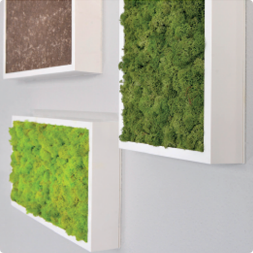Quality is Key When you Buy an Indoor Plant
 You get what you pay for is only a cliché because, more often than not, it’s true. And it’s certainly true when it comes to plants. Ask anyone who buys plants regularly and you will hear a familiar refrain: it costs a little green to get the right green. For plants destined for indoor spaces, keeping them green can be a challenge; but starting with the right plant makes it a lot easier.
You get what you pay for is only a cliché because, more often than not, it’s true. And it’s certainly true when it comes to plants. Ask anyone who buys plants regularly and you will hear a familiar refrain: it costs a little green to get the right green. For plants destined for indoor spaces, keeping them green can be a challenge; but starting with the right plant makes it a lot easier.
We know that indoor plants are not only aesthetically pleasing, they can reduce stress and anxiety and improve air quality. So, how do you spot quality and avoid coming home to a shriveled zombie husk, alive but just barely? There are several simple tips you can follow to make sure you are buying a quality indoor plant:
- Overall Impression: Take a walk around the nursery. Do the plants appear well cared for? Are there brown or wilted plants? If they owners are not taking care of some plants it’s likely they are not taking care of others.
- Leaves & Shape: Are the leaves of the plant lush and green? Steer clear of plants with brown or yellowing leaves or if the edge of the leaves are brown and dry. Is the plant full and healthy? A tall plant may not mean a healthy plant; it may have grown taller because it was straining for light.
- Disease & Insects: Check the plant – both sides of the leaves – for disease. Holes, spots and black areas on the leaves may mean an unhealthy plant. Examine the potting soil for insects, these little buggers can quickly spread to other plants.
Picking a quality Ficus Lyrata aka Fiddle Leaf Fig
This magnificent plant can fill a room with its majestic leaves and commanding height.
Make sure to check for discoloration or dots on leaves and buy from a quality vendor with a reputation for quality.
A plant with insects can also quickly spread like wildfire if you have other plants in the home, felling not only your Ficus Lyrata but any leafy friends in the vicinity.
After shipping hundreds of these beauties, we suggest you have a bright, sunny spot for this plant, preferably a covered or shaded patio or window facing east, west or, for the best results, south. Learn more about this popular plant here.
Check the roots on your Bird of Paradise
This is good advice for any indoor plant, but the root system should look strong and healthy with white tips. Lifting the plant and separating it from the grow pot should reveal a dense mix of soil and root. The soil should be held together by the roots but shouldn’t overwhelm the soil.
You need never worry about this with our plants. They are carefully examined before they ship, many with a sub-irrigation system that means you never need to remove the plant from its pot. Want to learn more about this majestic plant? Click here.
Check your Kentia Palm for weeds before buying
This is another tip that could apply to any purchase and it’s really a no-brainer.
Weeds are draining valuable nutrients form the soil, stealing those from your plant. A competent nursery staff would never allow this to happen. Run, don’t walk from this nursery. They are either smoking something funny or don’t care; maybe both. Learn more about this stately plant here.
Pick the perfect Areca Palm
Highly rated as a natural air purifier, the Areca Palm is growing more popular. Check for discoloration on leaves, dry or brown leaf edges and, of course, weeds, before opening your wallet.
Click here to learn more about this beautiful and versatile plant.
We pride ourselves on quality rather than quantity at Plantz.com. But don’t take our word for it, see what our customers have to say.


















